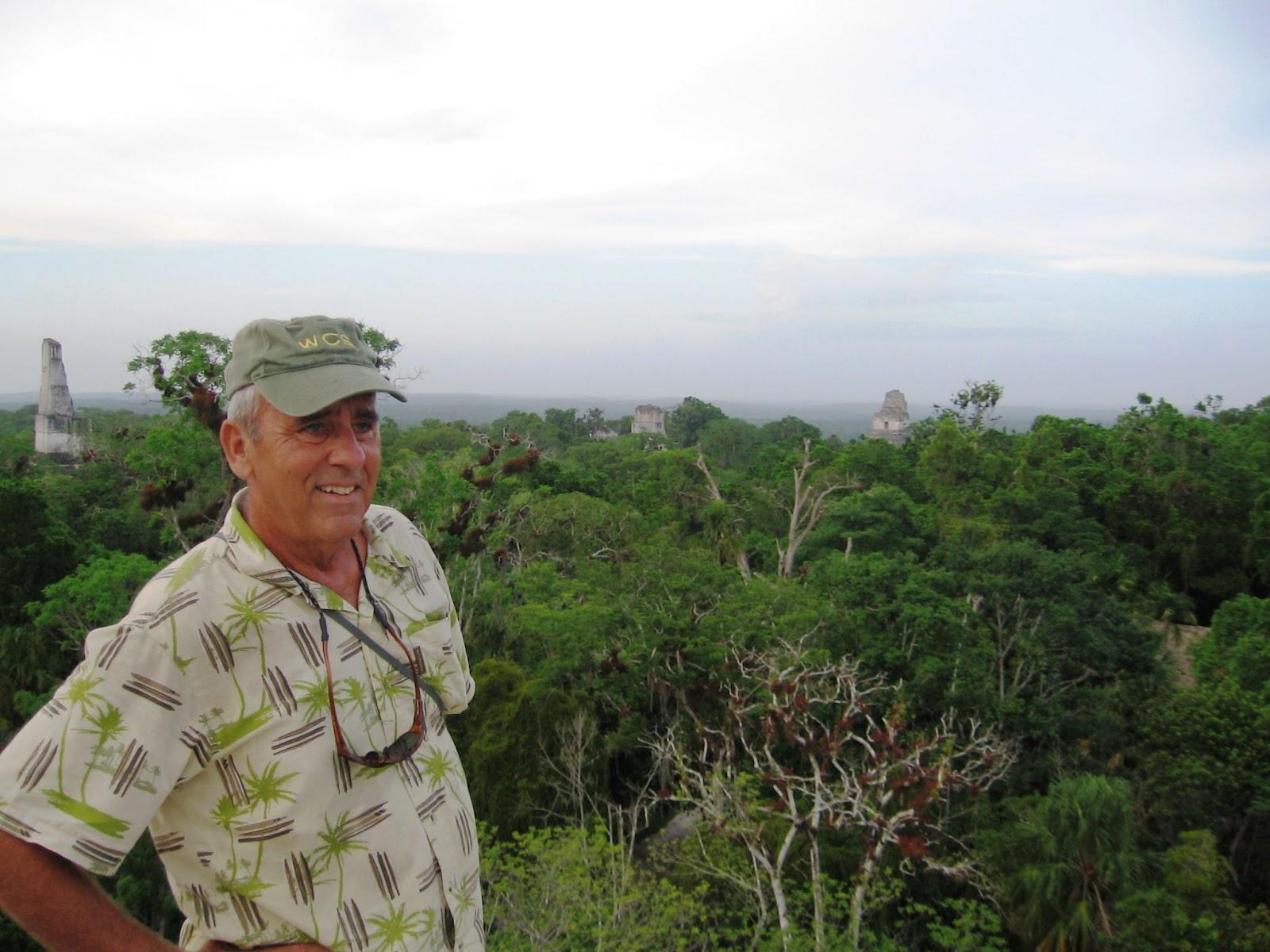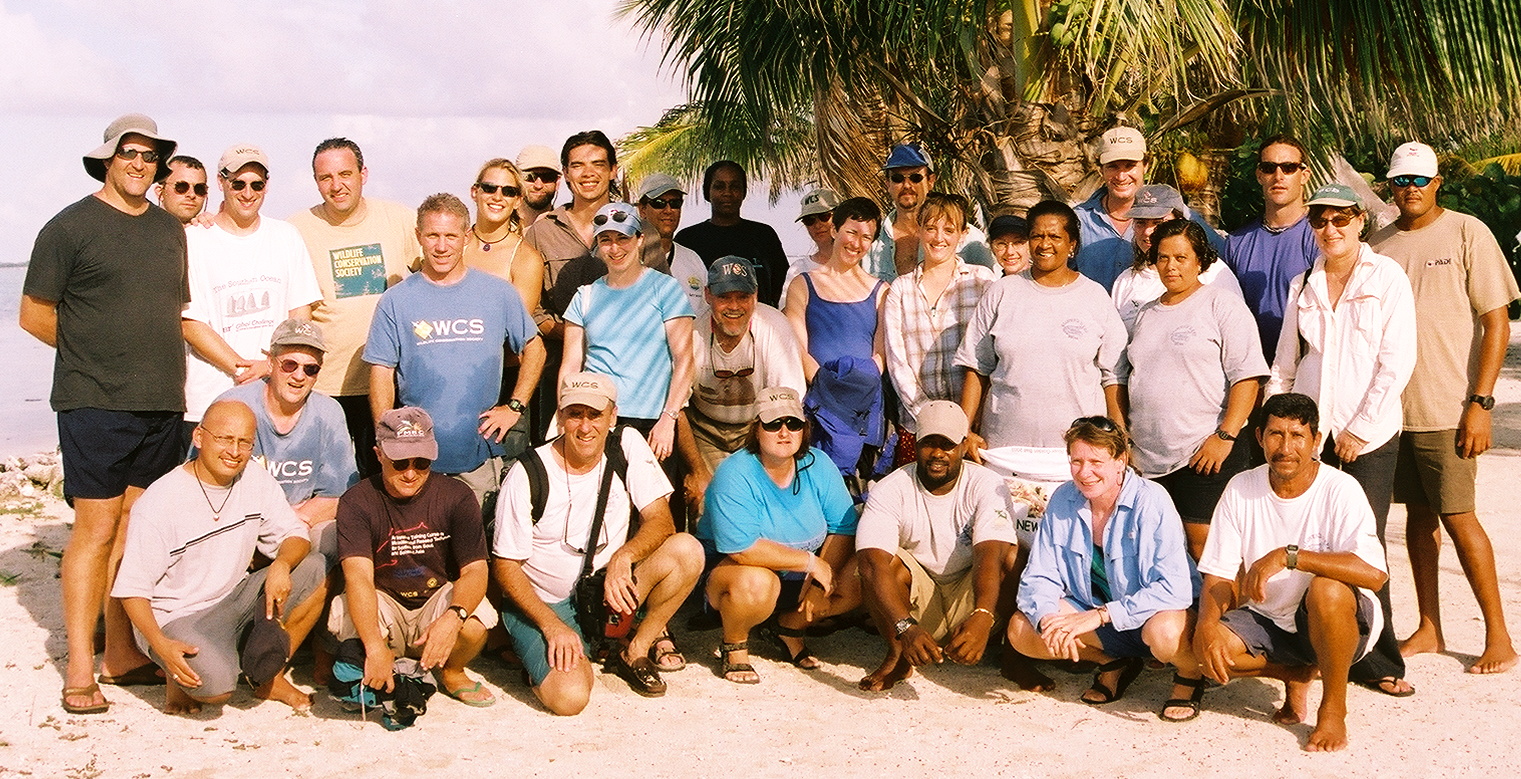Chuck Carr, or “Don Chuck” as he was known throughout Mesoamerica, passed away January 21, 2024, and WCS lost one of the founding members of its conservation programs. Chuck was instrumental in shifting the New York Zoological Society’s conservation programs from a small cadre of senior, influential field biologists to a much more inclusive and younger group more interested in conservation work. He joined the NYZS in 1980, just as it launched the Animal Research and Conservation Center, to become its Assistant Director under George Schaller. Chuck took the lead on identifying and supporting the next generation of WCS conservation biologists. He sent Alan Rabinowitz to Belize to study jaguars in 1982, and in 1983, Charlie Munn to Peru to study parrots and macaws, Chris Hillman to Ethiopia to follow Mountain Nyala, and Stu Strahl to the llanos of Venezuela to study hoatzins. Elizabeth Bennett went to the Bornean mangroves to examine proboscis monkeys in 1984, and Josh Ginsberg to study wild dogs in 1985, to name only a few. Many would return in later years and become WCS staff.
 Photo: Archie "Chuck" Carr III at the Temple of the Lost World, Tikal, Guatemala.
Photo: Archie "Chuck" Carr III at the Temple of the Lost World, Tikal, Guatemala.
But Chuck’s great love was Central America and the Caribbean. It was a family tradition. Archie Carr, his father, was the great sea turtle biologist, who wrote “The Windward Road” in 1956. His mother was Marjorie Carr, who founded the Florida Defenders of the Environment and led the battle to stop the Cross Florida Barge Canal. Beginning in 1987, Chuck worked closely with Jacque Carter and Janet Gibson on the conservation of the Belize Barrier reef, work that would result in the establishment of the Hol Chan marine reserve, the acquisition of Middle Cay by WCS on Glover’s Reef, and win Janet the Goldman Prize. In 1988, he supported Peter and Annie Meylan’s work on sea turtles in Panama, and in 1996 Cynthia Lagueux’s work on green turtles on the Miskito coast of Nicaragua. On land, he sponsored José Ottenwalder surveys in the Dominican Republic in 1986, and placed Bruce and Carolyn Miller in Belize, originally to help create the Chiquibul National Park, and then to work closely with Barry Bowen at Gallon Jug reserve. And in 1997, he helped establish Roan McNab as a conservation presence in Uaxactun and Tikal, Guatemala. Chuck had a wonderful knack of seeing the potential in an individual, whether that person came across as a long-haired hippie or an inveterate beachcomber.
In the early 1990s, Chuck formally became the Regional Coordinator for the region, and Over the next 10 years, worked closely with Jim Barborak and Mario Boza, created the visionary “Paseo Pantera”, a plan for a natural corridor connecting the isthmus. As the countries of region bought into the idea, it became the Mesoamerican Biological Corridor, a precursor to WCS’s present focus on the Five Great Forests of the region. Under his leadership, the WCS Mesoamerica Program helped found the Mesoamerican Society for Biology and Conservation, whose annual Congresses became the first professional event many Central American biologists attended, proudly presenting their research to their regional peers.

Like his father, Archie Carr, Chuck deeply understood that scientific knowledge about natural systems alone was not enough to ensure sustainability and regeneration of coral reefs and tropical rainforests. Chuck was always passionate about the need for WCS field scientists to engage governments, Indigenous Peoples, and local communities as part of the team. He encouraged his field scientists to not only reach the minds of people through the facts and theories of science, but also their hearts through meaningful engagement, respect and caring.
Of the many field scientists and conservationists that Chuck nurtured over the time of his career, they would all agree that he not only led them in their work, he inspired them to achieve goals that at the time seemed impossible. Chuck was first and foremost a visionary. He helped others to see how things might be different in the future. For example, where many might look out and see the Belize Barrier Reef and its islands and atolls as places to catch fish or scuba dive, Chuck would look out to sea and see the islands as a string of precious pearls with Glover’s Reef Atoll as its crown jewel. He was such a special person who took his work seriously, and who dedicated his entire life to making this planet a better place for wildlife and humanity.